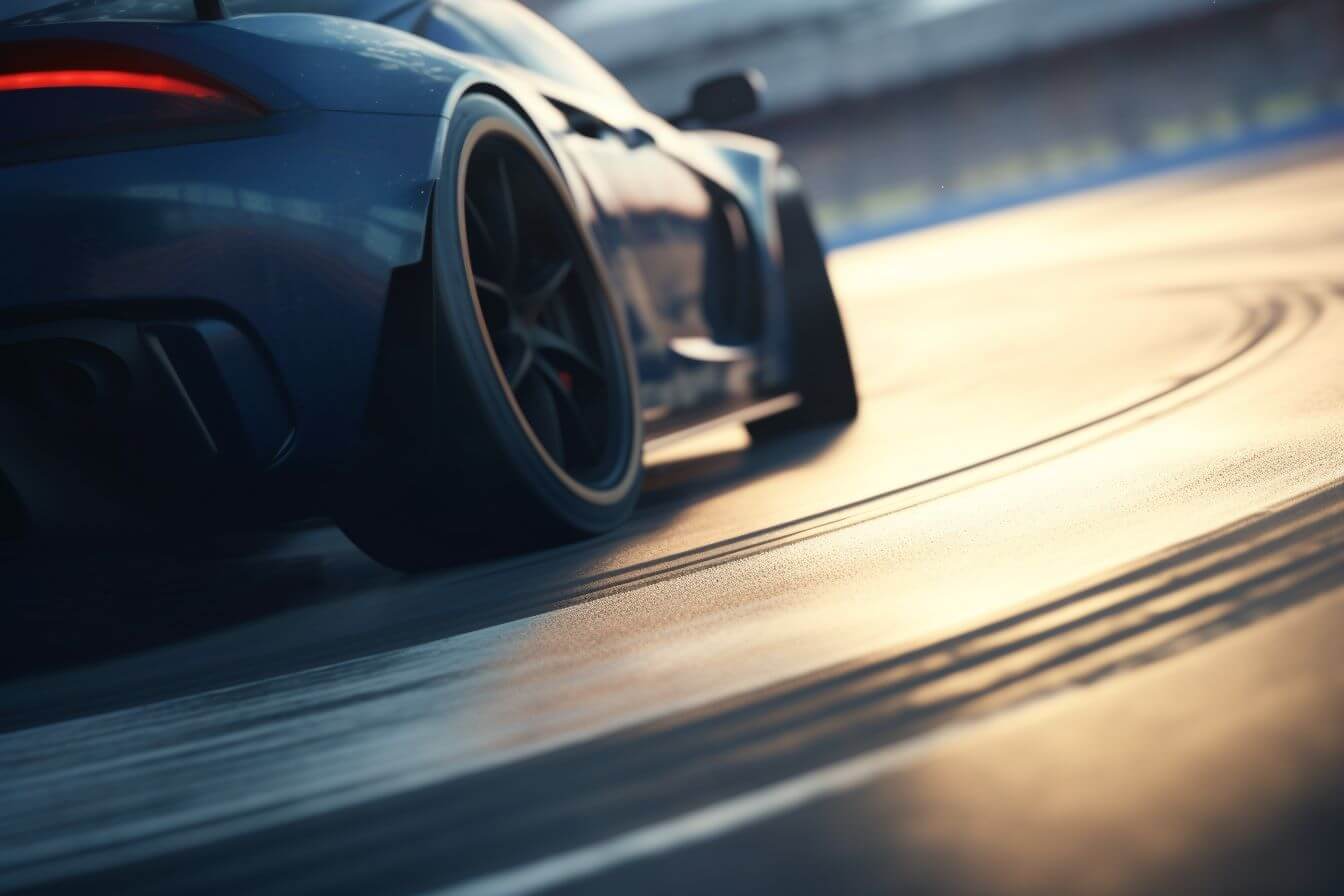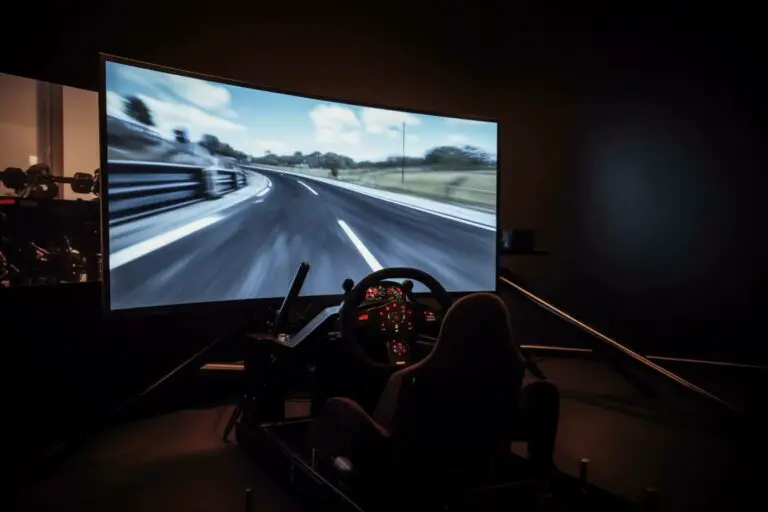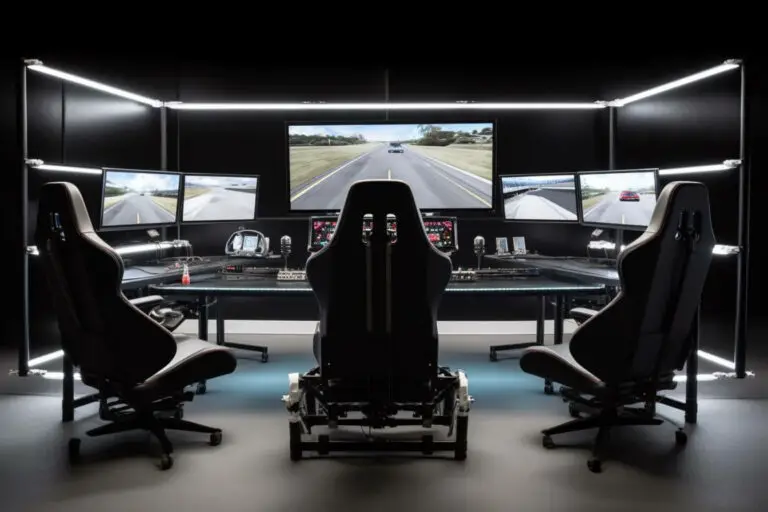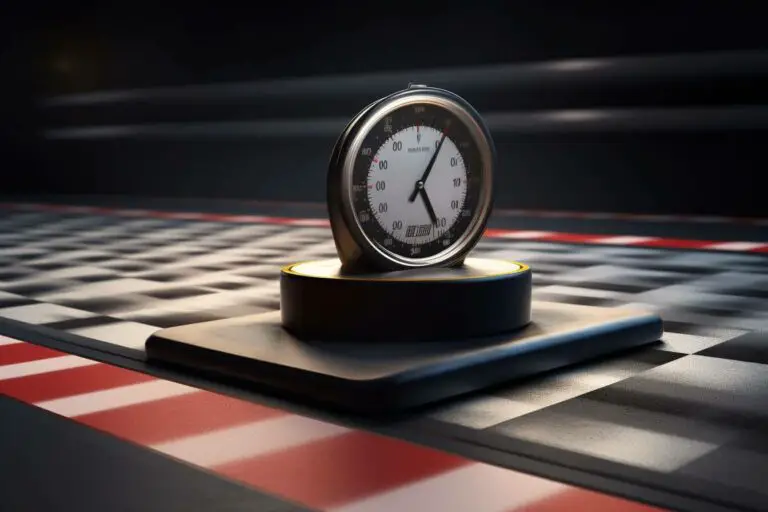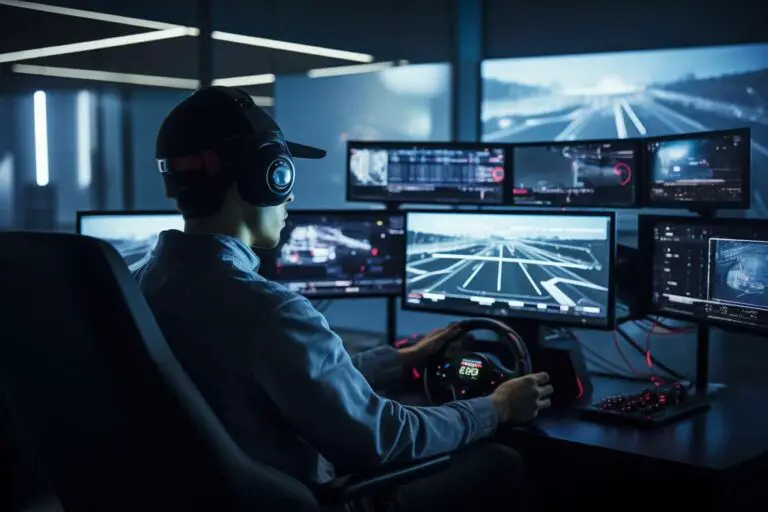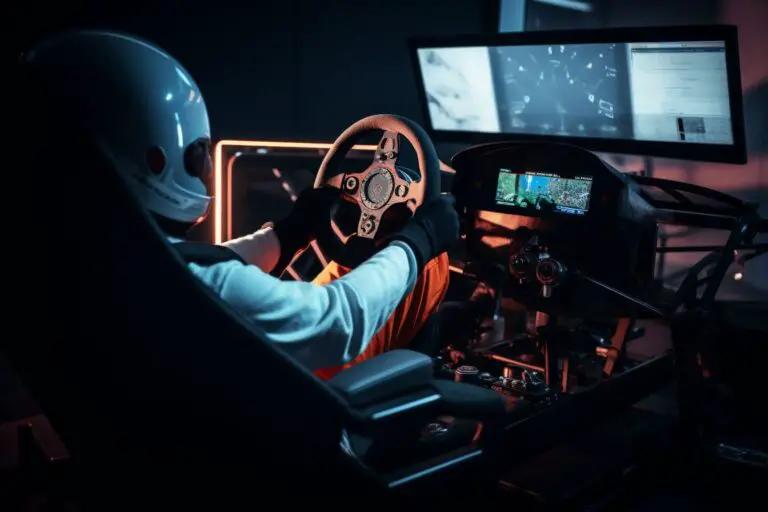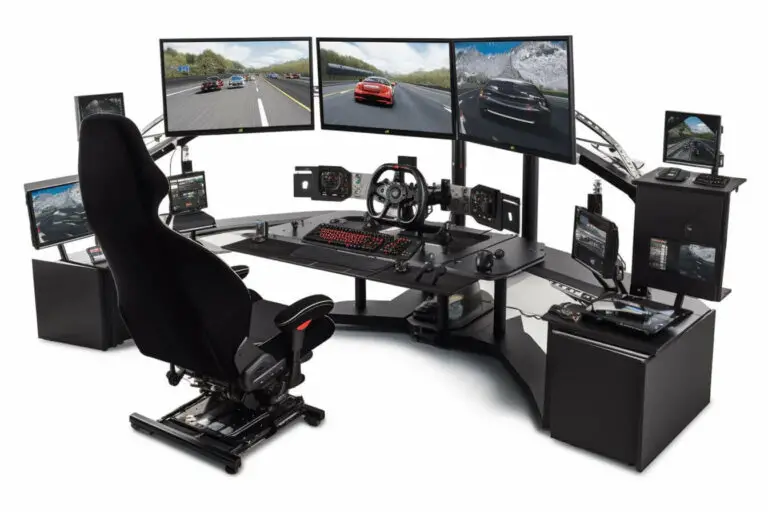How To Consistently Hit The Perfect Racing Line For Ultimate Speed
- How To Consistently Hit The Perfect Racing Line For Ultimate Speed
- Grasping The Concept Of Racing Lines
- Understanding Vehicle Dynamics
- Approaching Corners With Precision
- Mastering The Art Of Braking
- Balancing Speed And Control
- Analyzing And Learning From Top Racers
- Practicing And Refining Your Technique
- Frequently Asked Questions
- How Does The Type Of Vehicle (E.G., Front-Wheel Drive, Rear-Wheel Drive, All-Wheel Drive) Affect The Optimal Racing Line And Cornering Techniques?
- Are There Any Specific Adjustments Or Modifications To My Vehicle That Can Help Improve My Ability To Maintain The Perfect Racing Line?
- How Can I Adapt My Racing Line And Technique In Different Weather Conditions, Such As Wet Or Icy Surfaces?
- Are There Any Mental Or Physical Exercises That Can Help Me Improve My Focus, Reaction Time, And Overall Performance While Trying To Achieve The Perfect Racing Line?
- How Can I Incorporate Data Analysis Tools And Technology, Such As Telemetry Systems Or Racing Simulators, To Better Understand And Optimize My Racing Line And Overall Performance?
- Conclusion
Are you tired of watching your opponents speed past you on the racetrack, leaving you in their dust? It’s time to step up your game and learn how to consistently hit the perfect racing line for ultimate speed.
You may have heard the term ‘racing line’ before, but do you truly understand what it means and how it can improve your performance on the track? In this article, we’ll dive into the concept of the ideal racing line and provide tips on how to nail it every single time.
It’s not just about hitting top speeds; achieving optimal lap times is all about mastering that perfect line through each corner. By finding a balance between speed and precision, you’ll be able to shave valuable seconds off your overall race time – which could mean the difference between victory and defeat.
So let’s get started: buckle up, put the pedal to the metal, and prepare to unleash your inner racer as we explore strategies for nailing that elusive perfect racing line!
Other Interesting Articles to improve your Sim Racing Techniques
How To Improve Your Sim Racing Lap Times: Shave Seconds Off Your Lap Time
What Are the Top Techniques to Master Corners in Sim Racing?
How Can I Optimize My Car Setup for Faster Lap Times in Sim Racing?
Discover the Insider Tips for Smoother Braking and Acceleration in Sim Racing
Which Driving Aids Can Help You Become a Faster Sim Racer?
What Can You Learn from Pro Sim Racers to Boost Your Performance?
Uncover the Mental Strategies to Stay Focused and Improve Your Sim Racing Skills
How to Analyze Telemetry Data to Unlock Your Full Sim Racing Potential
How to Train Your Way to Sim Racing Greatness: Tips, Tricks, and Techniques
Grasping The Concept Of Racing Lines
Grasping the concept of racing lines is essential for any aspiring racer who wants to achieve ultimate speed on the track. A racing line refers to the path a driver takes around a circuit, which allows them to maintain optimal velocity while navigating turns and straights. By following an ideal racing line, drivers can minimize the time spent slowing down for corners and maximize their acceleration out of turns.
To understand how to find the perfect racing line, it’s important to visualize each corner as having three main components: turn-in point, apex, and exit point. The turn-in point is where you begin steering into the curve; it should be chosen so that your car approaches the inside edge of the track at its lowest possible speed.
The apex marks the middle of the corner where your vehicle reaches its closest proximity to the inside curb or barrier. This is typically considered the slowest part of a corner, but hitting this spot just right will allow you to accelerate smoothly through the rest of the bend.
Lastly, there’s the exit point – positioned at an angle that sets up your trajectory onto a straightaway with maximum momentum. Mastering these elements may take some trial and error along with practice, but consistently honing in on these key points throughout each lap will help improve overall speed when racing.
It’s crucial not only to focus on mastering individual sections of race tracks but also understanding how they connect seamlessly together as one fluid motion from start-to-finish. Remember that every millisecond counts when trying to shave precious time off laps – striving for perfection in finding and executing those ideal racing lines could make all difference between victory and defeat!
Understanding Vehicle Dynamics
As we delve further into the art of racing, it becomes evident that mastering the perfect racing line is just one piece of the puzzle. To truly excel on the racetrack and achieve ultimate speed, a solid understanding of vehicle dynamics is crucial.
Vehicle dynamics encompasses the various forces at work during motion and how they interact with your car’s suspension, tires, and other components. Equipped with an understanding of these fundamental concepts will allow you to better analyze how your vehicle responds under different conditions.
This knowledge can be applied not only to enhancing your driving skills but also making informed decisions about modifications that may enhance performance. As you become more proficient in identifying areas where improvements can be made based on your comprehension of vehicle dynamics, you’ll find yourself consistently hitting that perfect racing line for maximum speed even more frequently than before without relying solely on instinct alone.
To grasp this essential aspect of racing, consider these key factors in vehicle dynamics:
- Weight transfer: During acceleration, braking, or cornering, weight shifts within the car which affects traction levels.
- Tire grip: The amount of force needed to break traction between tire and road surface; critical for maintaining control while navigating corners.
- Suspension geometry: How your car’s suspension reacts to changes in load due to weight transfer; vital for optimizing handling characteristics.
- Aerodynamics: The impact air resistance has on performance; important when considering drag reduction measures to maximize top speeds.
Approaching Corners With Precision
Approaching corners with precision is a crucial aspect of consistently hitting the perfect racing line for ultimate speed.
One key element to achieving this is braking at the correct time and place. To do so, it’s essential to identify the optimal braking points before entering each corner. This often involves using reference markers such as trackside signs or changes in surface texture that are visible from your driving position.
Another technique for approaching corners with precision is smoothly transitioning between acceleration, braking, and steering inputs. Smooth inputs help maintain traction and stability while navigating through turns. It’s important to gradually apply pressure on the brake pedal rather than stomping on it suddenly, allowing weight transfer to occur progressively.
Similarly, after reaching maximum deceleration during braking, ease off the brakes gently as you turn into the corner to avoid unsettling the car.
Mastering these techniques will significantly improve your ability to hit the perfect racing line with confidence and consistency. Practice makes perfect; therefore, spending more time on-track experimenting with different approaches can lead to finding what works best for you and your vehicle setup.
Remember that maintaining focus throughout an entire lap or race requires mental stamina, which can be developed by continuously challenging yourself during practice sessions and analyzing performance data afterward. By refining these skills over time, you’ll become increasingly adept at approaching corners precisely and ultimately achieve faster lap times overall.
Mastering The Art Of Braking
Braking is the unsung hero of perfecting your racing line, providing that crucial balance between speed and control. Like a master chef carefully adding seasoning to their signature dish, braking at just the right moment can transform an average lap into something truly special.
- Trail Braking: This technique entails applying brake pressure while turning into corners, allowing you to maintain higher speeds leading up to it. As you reach the apex, gradually release the brake pedal so as not to unsettle the car’s balance.
- Threshold Braking: The art of pushing your brakes to their limit without locking them up or causing understeer. By doing this, you’ll maximize deceleration, shaving valuable seconds off your lap time.
- Brake Balance Adjustment: Modifying the distribution of braking force between the front and rear wheels can help optimize tire grip during cornering. Experiment with different settings for varying track conditions and vehicle setups.
One cannot overstate how essential practice is when working on these techniques; after all, Rome wasn’t built in a day! Dedicate ample time and effort towards understanding your vehicle’s nuances by repeatedly driving around familiar tracks or using simulators if available.
Remember: patience breeds excellence – don’t expect immediate results but rest assured that every second spent honing your craft will pay dividends out there on the racetrack where milliseconds matter most.
Balancing Speed And Control
Braking Techniques:
Knowing when to brake and how much to brake is key for finding the perfect racing line and hitting maximum speed. Braking late and braking at a consistent rate is essential for achieving the perfect racing line.
Cornering Strategies:
It’s essential to be able to take corners as quickly and smoothly as possible. You must be able to analyze the corner and adjust your steering accordingly so you can exit it quickly and efficiently.
Acceleration Analysis:
Analyzing when to accelerate and how much acceleration is necessary is key for making sure you don’t lose speed. It’s important to be able to analyze when it’s best to accelerate and when you should remain at a constant speed.
Braking Techniques
When you’re flying down the track, it’s easy to get caught up in the adrenaline and excitement of pushing your car to its limits. But remember, it’s not just about going fast – you’ve got to be able to slow down too! That’s where braking techniques come into play.
By mastering these skills, you’ll be better equipped to maintain control while maximizing speed.
One essential braking technique is trail braking. This involves easing off the brakes as you enter a corner, allowing you to carry more speed through the turn. To do this effectively, start by applying firm pressure on the brake pedal before turning in. As you approach the apex of the corner, gradually reduce brake pressure so that by the time you reach it, you’re using minimal braking force. This helps transfer weight from the front tires (which are doing most of the work during heavy braking) back toward the rear tires for improved grip and stability.
Another critical aspect of proper braking is knowing when to use engine braking versus traditional braking methods. Engine braking occurs when you lift off the accelerator, causing your car’s engine to slow itself rather than relying solely on your brakes. This can help preserve brake life and keep them from overheating during extended periods of hard driving or racing conditions.
However, don’t rely on engine braking alone; always combine it with moderate pressure on the brake pedal for optimal performance and safety around corners and at high speeds alike. While there may not be a definitive answer for every situation, practice makes perfect – experiment with different combinations until finding what works best for both yourself and your vehicle!
Cornering Strategies
As you continue to hone your braking skills, it’s crucial to develop effective cornering strategies as well. After all, balancing speed and control is not just about how fast you can go in a straight line – the ability to navigate corners quickly and smoothly plays a significant role in overall performance.
To master this aspect of driving, focus on techniques such as weight transfer management, optimal racing lines, and utilizing throttle steering.
Weight transfer refers to the shifting of your car’s weight from one side (or end) to another during turns. By controlling this movement through careful inputs on both the brake pedal and accelerator, you’ll be able to maintain better grip throughout each corner while also preserving tire life.
Optimal racing lines involve choosing the most efficient path around a turn for maximum speed; often, this means entering wide before cutting tight toward the apex then exiting wide again.
Lastly, throttle steering allows drivers to fine-tune their vehicle’s trajectory through subtle adjustments using only the gas pedal – applying more pressure when necessary or easing off slightly when needed.
Incorporating these cornering strategies into your skillset will undoubtedly improve your track-day experience by helping you find that perfect balance between raw speed and precise control. With practice and determination, you’ll soon discover what works best for your unique style behind the wheel – pushing yourself closer towards becoming an even more formidable driver on any race course!
Acceleration Analysis
After mastering braking and cornering techniques, it’s time to focus on acceleration analysis as another crucial aspect of balancing speed and control.
Understanding how to apply power effectively is essential in maximizing your vehicle’s potential while maintaining stability on the track. This means knowing when to be aggressive with the throttle and when to ease off, ensuring a smooth transition through different phases of driving.
Analyzing your acceleration requires paying close attention to various factors, such as your car’s grip levels, weight transfer during turns, and optimal racing lines. By being aware of these elements, you’ll be better equipped to make informed decisions about how much gas to give at any given moment – ultimately enhancing both performance and safety.
One key point to remember is that smoother inputs generally lead to more efficient use of available traction; this principle applies not only for braking but also accelerating out of corners or along straightaways.
The art of balancing speed and control relies heavily on honing each individual skill – from effective braking strategies to precise cornering methods and now thoughtful acceleration analysis.
As you continue developing these abilities, strive always for consistency in execution while never losing sight of the bigger picture: finding harmony between raw power output and complete mastery over every curve thrown your way.
Analyzing And Learning From Top Racers
As we delve deeper into the art of racing, it becomes clear that achieving a balance between speed and control is crucial for success on the track. However, this begs the question: how does one consistently hit the perfect racing line to optimize their performance?
This is where analyzing and learning from top racers can play an invaluable role in your development as a driver.
One effective approach to honing your racing skills is by studying footage of professional races, particularly those featuring renowned drivers with exceptional technique. Pay close attention to their choice of lines through corners and straights, observing how they position their vehicles relative to other cars on the track. Furthermore, take note of when these seasoned racers accelerate or decelerate throughout various sections of the circuit.
By dissecting each move made by accomplished drivers, you will be better equipped to understand which aspects of your own driving require improvement – ultimately enabling you to emulate their tactics and achieve optimal lap times.
Another key element in advancing your racecraft involves conducting post-race analyses of both your own performance and that of fellow competitors. In doing so, not only will you identify areas requiring refinement but also recognize patterns among successful racers that contribute towards faster laps.
Over time, incorporating these learnings into your practice sessions will help refine your ability to hit the perfect racing line consistently – resulting in enhanced speed without compromising stability or control on the track.
Practicing And Refining Your Technique
Now that you have a basic understanding of the racing line and how it can help improve your speed on the track, it’s time to practice and refine your technique. This process requires patience, dedication, and repetition. The more you practice hitting the perfect racing line, the more natural it will become for you.
- Start by walking around the track to analyze each corner in depth.
- Use visual markers such as cones or signs to identify key points along the racing line.
- Take note of any obstacles or hazards that might affect your approach to a corner.
After walking through the track and familiarizing yourself with its layout, begin practicing at slower speeds – focusing on consistently hitting your apexes and tracking out smoothly onto straightaways. Gradually increase your pace while maintaining precision in your movements, eventually working up to full race speeds.
Developing consistency in hitting the perfect racing line takes time and effort, but pays off immensely when vying for those precious milliseconds on race day. By dedicating ample time towards refining this skill, you’ll find yourself not only achieving quicker lap times but also growing into a more confident driver overall.
Remember that constant refinement is key; keep analyzing every run and making adjustments accordingly until you’ve mastered this crucial component of high-speed racing.
Frequently Asked Questions
How Does The Type Of Vehicle (E.G., Front-Wheel Drive, Rear-Wheel Drive, All-Wheel Drive) Affect The Optimal Racing Line And Cornering Techniques?
Hugging the perfect racing line is like a graceful dance between driver and vehicle, where each type of drive system plays its own unique role in cornering techniques.
Front-wheel drive (FWD) vehicles tend to understeer, requiring drivers to brake earlier and maintain consistent throttle input through corners for optimal grip.
In contrast, rear-wheel drive (RWD) cars are more prone to oversteer, demanding precise throttle control and smooth steering inputs to maximize traction and avoid spinning out.
Meanwhile, all-wheel drive (AWD) systems offer superior traction by distributing power among all four wheels, enabling drivers to enter corners at higher speeds while maintaining stability throughout the turn.
Ultimately, understanding these nuances can help racers adapt their driving styles according to their vehicle’s characteristics, unlocking the secrets behind consistently hitting that ideal racing line for ultimate speed.
Are There Any Specific Adjustments Or Modifications To My Vehicle That Can Help Improve My Ability To Maintain The Perfect Racing Line?
Yes, there are specific adjustments and modifications you can make to your vehicle to improve your ability to maintain the perfect racing line.
These may include upgrading suspension components for better handling, tweaking tire pressure for optimal grip, installing performance brakes for more effective braking, and adjusting wheel alignment settings such as camber, toe, and caster angles.
Additionally, lighter wheels and aerodynamic enhancements like spoilers or splitters can provide improved stability at high speeds.
Keep in mind that these changes should be tailored to your driving style and the specific type of vehicle (front-wheel drive, rear-wheel drive, or all-wheel drive) to achieve the best results.
How Can I Adapt My Racing Line And Technique In Different Weather Conditions, Such As Wet Or Icy Surfaces?
Ah, the joys of racing on a perfectly dry and sunny day – said no one ever when faced with wet or icy conditions.
To adapt your racing line and technique in these challenging situations, you’ll need to prioritize traction over outright speed. Focus on braking earlier and more gently, while avoiding sharp steering inputs that could cause loss of grip.
In addition, be mindful of puddles or slippery patches that may affect your vehicle’s handling. By taking wider lines around corners and gradually easing back onto the throttle as you exit turns, you can help maintain stability and control throughout each lap.
Remember, consistency is key when navigating treacherous weather; it might not feel like ultimate speed, but staying on track is better than sliding off into oblivion!
Are There Any Mental Or Physical Exercises That Can Help Me Improve My Focus, Reaction Time, And Overall Performance While Trying To Achieve The Perfect Racing Line?
To improve focus, reaction time, and overall performance while aiming for the perfect racing line, consider incorporating mental and physical exercises into your routine.
Mental exercises such as meditation or mindfulness can help enhance concentration and reduce stress levels, while activities like playing video games or completing puzzles could sharpen cognitive skills and increase reaction times.
For physical improvement, try incorporating regular cardiovascular workouts to build endurance and promote quicker reflexes.
Additionally, practicing yoga or pilates can develop core strength and balance, which are essential for maintaining control during high-speed maneuvers on the racetrack.
How Can I Incorporate Data Analysis Tools And Technology, Such As Telemetry Systems Or Racing Simulators, To Better Understand And Optimize My Racing Line And Overall Performance?
A staggering 80% of professional racing drivers use data analysis tools and technology to enhance their performance on the track.
To incorporate these advancements into your training, consider using telemetry systems or racing simulators that will provide real-time feedback on your racing line, braking points, and throttle inputs.
These insights can help identify areas for improvement and optimize your overall performance.
Moreover, analyzing this data alongside a coach or mentor can lead to more effective adjustments in technique and strategy, ultimately helping you achieve the perfect racing line consistently.
Conclusion
In conclusion, mastering the art of consistently hitting the perfect racing line is truly a dance between man and machine.
With dedication, practice, and attention to detail, you can become one with your vehicle and tackle each curve like a well-choreographed ballet.
Remember that Rome wasn’t built in a day; honing your skills will take time and effort.
Embrace the journey as much as the destination, and soon enough, ultimate speed will be within your grasp.

